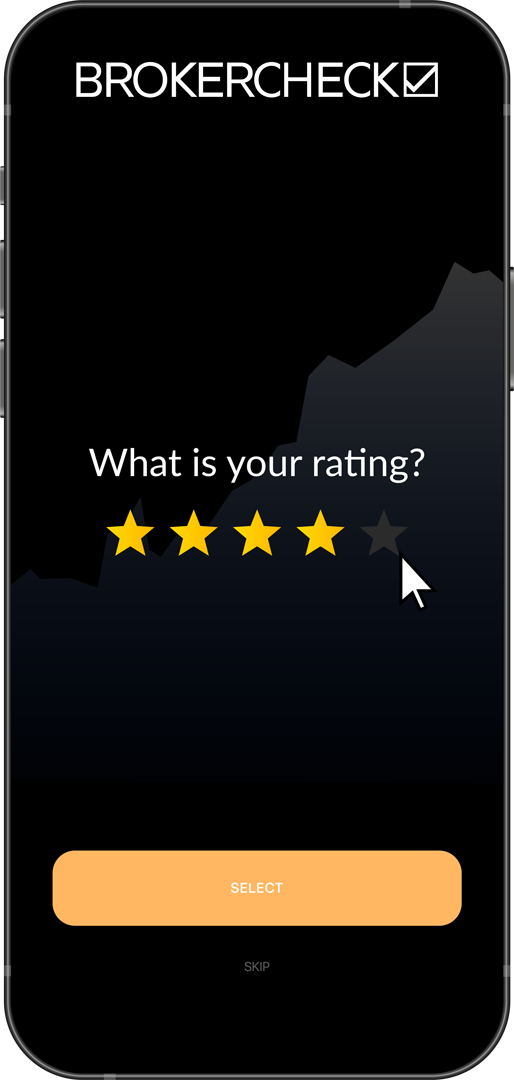1. Understanding RSI: What is it?
Relative Strength Index, or RSI, is a widely used momentum indicator in technical analysis. It offers insight into the strength and speed of a market price movement, helping traders and investors make informed decisions. RSI operates on a scale of 0 to 100, with readings below 30 indicating an oversold market condition and readings above 70 signifying an overbought market condition.
Calculation of RSI involves a fairly simple mathematical formula. It is computed by averaging the number of days a stock closes up, divided by the number of days it closed down. The result is an index that ranges from 0 to 100. This figure is then used to gauge whether a market is overbought or oversold.
Divergence is a key concept in the use of RSI. This occurs when the market price and the RSI are moving in opposite directions. For instance, if a stock price is making new highs but the RSI is not, it may indicate a potential price reversal, as the momentum behind the stock may be slowing down.
RSI and Chart Patterns: Chart patterns can also be identified in the RSI. Just as with price, patterns such as head-and-shoulders or triangles can form in the RSI, offering potential insight into future price movements.
RSI and Trend Lines: Just as it is possible to draw trend lines on price charts, traders can also draw trend lines on the RSI indicator. These trend lines can indicate potential price reversal points and can be a useful tool in identifying potential buy and sell points.
Limitations: However, like any other technical analysis tool, RSI is not perfect and has its limitations. RSI can sometimes give false signals, and hence, it should not be used in isolation. It is best used in conjunction with other indicators and tools, as well as in the context of the overall market trend.
Despite its limitations, the RSI is a powerful tool that can provide valuable insights into market conditions and potential trading opportunities when used correctly. It is a beneficial addition to any trader’s toolkit, helping to assess market conditions and identify potential buying and selling points.
1.1. Definition of RSI
The Relative Strength Index, often referred to by its acronym, RSI, is a crucial tool in the world of trading and investing that can be leveraged to assess the momentum and speed of price movements. Created by J. Welles Wilder over 40 years ago, the RSI is a technical momentum oscillator designed to measure the magnitude of recent price changes in an attempt to determine overbought or oversold conditions of an asset.
A crucial aspect to understand about this tool is that it is represented as an oscillator (a line graph that moves between two extremes) and can have a reading from 0 to 100. Typically, a stock is considered overbought when the RSI is above 70 and oversold when it is below 30. This conception stems from the assumption that after a rapid increase or decrease in price, a correction is likely to follow which could present potential trading opportunities for investors.
However, while the 70 and 30 thresholds are generally accepted in the field, some traders may set their own boundaries to better match the volatility of the particular asset they are observing. A broader understanding of the market and the specific asset being traded is crucial for setting these personalized thresholds.
It’s also important to note that the RSI can form patterns, such as triangles or head and shoulders, that may not be noticeable on the price chart itself. This is particularly useful for traders who employ technical analysis as it provides an additional layer of information to inform their decisions.
But like any financial tool, the RSI isn’t infallible and shouldn’t be used in isolation. It works best when combined with other indicators and tools. False signals can and do occur, especially during volatile periods in the market. This is why it is essential to pair the RSI with other technical analysis methods, like trend lines or moving averages, to confirm any signals it may produce.
Furthermore, the RSI is a momentum oscillator, which means it measures the speed and change of price movements, not the actual price levels. This means that even if an asset is labeled as being ‘overbought’ or ‘oversold’, the price can continue to climb or fall for some time. So, while the RSI can provide significant insights, it should not be the sole determinant of your trading decisions.
By understanding and correctly using the RSI, traders can gain a more comprehensive view of the market and make more informed, potentially profitable decisions. But remember, always use this tool as part of a broader trading strategy, not as a standalone indicator.
1.2. History and Development of RSI
The Relative Strength Index, also known as RSI, was developed by technical analyst J. Welles Wilder Jr. and introduced in his 1978 book, “New Concepts in Technical Trading Systems”. Wilder was a mechanical engineer who turned to real-estate investing and technical analysis to overcome the financial losses he had incurred. He introduced a host of groundbreaking technical indicators in his book, but RSI stands out as one of the most popularly used tools even today.
This momentum oscillator measures the speed and change of price movements, facilitating traders and investors in identifying overbought or oversold conditions in a trade. It’s a plotted graph that oscillates between zero and 100, with readings above 70 indicating overbought conditions and those below 30 suggesting oversold conditions.
After its introduction, the RSI caught the attention of traders keen on leveraging mathematical calculations to gain insights into market trends. Over time, Wilder’s RSI reached broad acceptance and utilization among traders due to its effectiveness and versatility. It continues to be an integral part of various trading strategies, used in conjunction with other indicators to refine entry and exit points.
However, it’s worth mentioning that while the RSI was initially used for commodities trading where the 14-day calculation period was ideal, it was soon adapted to fit other asset types like stocks and Forex. Modifications to the RSI’s calculation period allowed for more flexibility and adaptation to a variety of trading strategies and timeframes.
Analysts and traders have also added their enhancements to the basic RSI over the years. For instance, Andrew Cardwell developed the concept of RSI divergence and convergence to predict potential price reversals. This is just one of the various ways the RSI has been adapted and evolved, proving its enduring value and versatility in the rapidly changing world of trading and investing.
While the concepts behind the RSI are more than four decades old, it has stood the test of time and remains one of the most trusted indicators in technical analysis. Its enduring relevance is a testament to Wilder’s innovative thinking and his significant contribution to the field of technical analysis.
1.3. Importance of RSI in Trading
The **Relative Strength Index (RSI)** is a momentum oscillator that measures the speed and change of price movements. Initially developed by J. Welles Wilder in 1978, it is one of the most popular and widely used technical indicators in trading. RSI ranges between 0 and 100 and is typically used to identify **overbought or oversold conditions** in a market. An RSI value above 70 suggests that the market is overbought, and a downturn may be imminent. Conversely, an RSI value below 30 indicates the market is oversold, suggesting a potential upswing is in the offing.
The importance of RSI in trading stems from its ability to provide a **relative evaluation of the strength of a market’s recent price performance**. This means the RSI can help traders identify potential price reversals, as well as gauge the strength of a current trend. It can also be used to confirm trade signals from other indicators or chart patterns. For instance, if an upward trend is identified using a moving average crossover, a trader might then use the RSI to confirm this trend by ensuring the RSI value is rising and not in an overbought condition.
Another significant aspect of RSI is its ability to identify **divergence**. This occurs when the price of an asset is moving in the opposite direction of the RSI. For example, if the price is making higher highs but the RSI is making lower highs, this could signal a potential price reversal. Recognizing divergence can play a crucial role in a successful trading strategy.
Furthermore, **RSI can be used in all market conditions**, making it a versatile tool. Whether a market is trending upwards, downwards, or sideways, the RSI can provide valuable insights into potential trading opportunities. It is equally useful in both commodity and stock markets.
However, it is important to be aware that while the RSI can be a powerful tool, **it is not infallible**. It is most effective when used in conjunction with other indicators and tools, such as moving averages, trend lines, and chart patterns. As with all trading strategies, managing risk and preserving capital should always take precedence over seeking profits.
In the world of trading, the **RSI is considered a leading indicator**. This means it can potentially give a trader a heads up on future price movements before they happen. However, as with all leading indicators, there’s a risk that the signal may be false. This is why it’s beneficial to use the RSI in conjunction with lagging indicators, which can confirm the signal provided by the RSI.
Overall, the **RSI is a valuable tool in a trader’s arsenal**, providing important insights into market conditions and potential trading opportunities. It can help traders identify overbought or oversold conditions, spot divergence, and confirm other trading signals. However, as with any tool, it is important to use it wisely and in conjunction with other indicators and strategies.
2. How RSI Works
The **Relative Strength Index (RSI)** is a momentum oscillator that measures the speed and change of price movements. It is used to identify oversold or overbought conditions in a market. The RSI is displayed as an oscillator, a line graph that moves between two extremes, and can have a reading from 0 to 100.
Generally speaking, an RSI reading over 70 indicates that a market is overbought, and an RSI reading under 30 indicates that it is oversold. However, these thresholds can be adjusted to better fit the specific asset.
The RSI is calculated using the formula: RSI = 100 – (100 / (1 + RS)), where RS is the average gain of up periods during the specified time frame divided by the average loss of down periods. To simplify, if the average gain is greater than the average loss, the RSI rises because RS will be greater than 1. Similarly, if the average loss is greater, the RSI declines because RS will be less than 1.
The standard setting for RSI is 14 periods, which can be applied to any time frame. However, just like other technical indicators, the RSI should not be used alone. It is best used in conjunction with other indicators and analysis techniques to increase the chances of successful trading.
It’s also worth noting that **RSI should not be confused with relative strength**, which is a comparison of two market indices or stocks, measured by the price performance of one compared to the other. The RSI, on the other hand, is a measure of the internal strength of a single security, an important difference for traders and investors to be aware of.
**Divergences** are also a key factor to consider when using RSI. A bullish divergence occurs when the RSI creates an oversold reading followed by a higher low that matches correspondingly lower lows in the price. This indicates rising bullish momentum, and a break above oversold territory could be used to trigger a new long position. A bearish divergence occurs when the RSI creates an overbought reading followed by a lower high that matches correspondingly higher highs on the price.
As with all technical trading strategies, the RSI is not infallible and can give false signals. Hence, it’s crucial to use risk management strategies and confirm signals with other indicators or methods.
2.1. Calculation of RSI
The Relative Strength Index (RSI) is a popularly used momentum oscillator that measures the speed and change of price movements. To understand the calculation of RSI, a basic comprehension of its individual components—gains, losses, average gain, average loss, and RS (Relative Strength)—is essential.
Gains and losses are the first variables in the equation. On each trading day, the gain or loss is calculated by comparing the current closing price with the previous day’s closing price. If the current price is higher, the result is considered a gain; if it’s lower, it’s a loss.
Next, we derive the average gain and average loss over a given period, typically 14 periods. The first calculation involves summing up the gains or losses for all the 14 periods and dividing the result by 14. For subsequent periods, the previous average is multiplied by 13 and the current gain or loss is added, then the sum is divided by 14. This method, known as smoothing, gives more weight to recent periods and less to older periods.
The Relative Strength (RS) is calculated by dividing the average gain by the average loss. RS illustrates the relative outperformance of gains to losses over the RSI period.
Finally, the RSI itself is computed using the formula: RSI = 100 – [100 / (1 + RS)]. The resulting RSI figure will be a value between 0 to 100. In general, an RSI above 70 suggests that the asset may be overbought (and due for a price correction), while an RSI below 30 might indicate it is oversold (and possibly due for a price increase).
Comprehending the calculation behind RSI can help traders make more informed decisions. It’s essential to remember that while RSI is a powerful tool, it should be used in conjunction with other forms of analysis to validate trading signals and avoid potential false positives.
2.2. RSI Scale and Its Meaning
The Relative Strength Index (RSI) is a vital tool used in technical analysis, gauging the speed and change of price movements. The RSI scale typically oscillates between 0 and 100, with specific levels indicating overbought or oversold conditions. Generally, an RSI reading above 70 is considered overbought, suggesting that a price correction may be imminent in the downward direction. Conversely, an RSI reading below 30 is seen as oversold, which means the asset may be undervalued, and there’s a high likelihood of a price rebound upward.
Understanding the RSI scale and its implications can provide valuable predictive insights and help traders make informed decisions. For instance, if a stock’s RSI crosses 70 from below, it’s usually a sell signal, indicating that the stock could be overpriced and may soon experience a price decline. On the other hand, if the RSI falls below 30, it’s typically a buy signal, suggesting that the stock could be a bargain and may soon rebound.
However, it’s important to note that while RSI can be a useful tool, it should not be used in isolation. It is best to use it in conjunction with other indicators and chart patterns to confirm signals and avoid potential false alarms. For instance, if a security is in a strong uptrend, it may remain overbought with an RSI above 70 for an extended period. Similarly, a security in a strong downtrend might remain oversold with an RSI below 30 for a long time. Therefore, merely relying on the RSI crossing 70 or 30 would result in premature selling or buying.
Another significant point to consider is the 50 level on the RSI scale. When the RSI crosses above 50 from below, it indicates growing momentum on the upside and vice versa. However, like the 70 and 30 levels, the 50 level should also be used in combination with other technical analysis tools to validate signals.
Lastly, remember that RSI divergence can be a strong signal of a potential trend reversal. When the security’s price forms a new high or low that isn’t confirmed by the RSI, it could suggest that the current trend is losing strength and a reversal may be on the horizon. For instance, if a stock forms a new high but the RSI fails to reach a new high, it shows a bearish divergence, suggesting a potential downward price movement. Conversely, if a stock forms a new low but the RSI doesn’t, it displays a bullish divergence, indicating a possible upward price move.
In essence, understanding the RSI scale and its implications can provide valuable insights for traders and investors. By identifying overbought and oversold conditions, predicting potential reversals, and interpreting the RSI in conjunction with other technical indicators, one can make more informed and successful trading decisions.
2.3. Decoding RSI Indicators and Signals
The Relative Strength Index, commonly known as the RSI, is a popular momentum oscillator that was developed by J. Welles Wilder. RSI measures the speed and change of price movements. It is calculated using the average gain and loss over a given period, typically 14 periods. The RSI creates an index from 0 to 100, providing a handy method to gauge the overall trend strength and potential reversal points.
Understanding the RSI Values
On the RSI scale, the level of 70 generally indicates overbought conditions, suggesting the possibility of a price pullback or trend reversal. Conversely, the 30 level is often considered an oversold condition, which could mean the asset’s price is due for a bounce or trend change. However, it’s crucial to note that these are not ironclad rules but more of guidelines, and the RSI values should be read in conjunction with other market indicators for effective decision-making.
Identifying Divergence
One of the most potent signals given by the RSI is a divergence. In technical analysis, divergence occurs when the price of an asset is moving in the opposite direction of a technical indicator, such as the RSI. For example, when an asset’s price reaches a new high, but the RSI fails to surpass its previous high, it’s called a bearish divergence. This can indicate that the current upward momentum is losing strength and a potential downward trend may be on the horizon. Conversely, a bullish divergence occurs when the asset’s price hits a new low, but the RSI makes a higher low, hinting at a potential upward trend reversal.
RSI and Trend Lines
Similar to price charts, trend lines can also be drawn on the RSI chart to identify potential breakout or breakdown points. For instance, if the RSI breaks below a trend line during an uptrend, it can indicate a potential trend reversal to the downside. Conversely, a break above the RSI trend line during a downtrend may signify a possible trend reversal to the upside.
RSI and Trading Strategies
Several trading strategies incorporate the RSI to determine entry and exit points. One common strategy is the RSI Overbought/Oversold Strategy, where traders enter a long position when the RSI dips below 30 and exit (or go short) when the RSI goes above 70. Another popular tactic is the RSI Divergence Strategy, where trades are placed based on the divergence signals from the RSI and the price chart.
Remember, while the RSI is a powerful tool in a trader’s arsenal, it’s not infallible and should be used in conjunction with other analysis methods for the best results. It’s also important to adjust the RSI settings and adapt your strategies as per the market conditions and your trading style for maximum efficiency.
3. Applying RSI in Trading
The Relative Strength Index (RSI) is often a go-to tool for traders as it aids in identifying potential buy or sell opportunities. The concept behind the use of RSI in trading is quite straightforward; it functions on the principle that it compares the magnitude of recent gains to recent losses to determine overbought or oversold conditions of an asset.
Typically, the RSI is calculated over a 14-day period, with values bounded between 0 and 100. A reading above 70 suggests an overbought condition, indicating that the asset might be due for a pullback or price reversal. Conversely, a reading below 30 suggests an oversold condition, hinting at a potential price bounce. Using these thresholds can certainly provide a basic understanding of the market condition and prompt timely trading decisions.
Divergence is another crucial aspect of RSI that traders can apply to their advantage. Simply put, when the price of an asset reaches a new high or low, but the RSI does not reach a new corresponding high or low, it creates a divergence. A divergence between the price and the RSI is a possible sign of an upcoming trend reversal. For example, if you notice an asset making higher highs while the RSI makes lower highs, it’s called a bearish divergence, predicting a possible downturn.
A word of caution here, though: while the RSI is a powerful tool, it should not be used in isolation and it is not infallible. False signals can occur, and the market can remain overbought or oversold for extended periods, particularly in a strong uptrend or downtrend. Thus, it’s advisable to use the RSI in conjunction with other tools and indicators to increase the accuracy and reliability of your trading decisions.
Lastly, although the standard settings for RSI is often set at 14, some traders might opt to decrease the value for a more sensitive reading, or increase it for a less sensitive reading, depending on their trading style and the particular asset they’re trading. Fine-tuning the RSI to match your personal trading style and the specific market conditions can further improve its effectiveness. Now, armed with these insights, you’re ready to add the RSI to your trading toolkit and start identifying potential trading opportunities!
3.1. Incorporating RSI into a Trading Strategy
The Relative Strength Index (RSI) is a momentum oscillator that measures the speed and change of price movements. It is typically used to identify overbought or oversold conditions in a market. The basic RSI trading strategy involves buying securities when their RSI is below 30 (an oversold condition) and selling securities when their RSI is above 70 (an overbought condition). However, this approach can be improved and made more sophisticated by combining it with other technical indicators and chart patterns.
RSI Divergence is a powerful method used by traders to spot potential market reversals. This occurs when the price of a security makes a new high or low that is not confirmed by the RSI. For instance, if a stock makes a new high but the RSI does not surpass its previous high, this is known as a bearish divergence and indicates that the bullish momentum is waning. Conversely, if a stock makes a new low but the RSI does not exceed its previous low, we have a bullish divergence, signifying weakening bearish momentum.
RSI Trendlines can be just as effective as price trendlines in identifying shifts in momentum. Traders draw trendlines on the RSI chart, and when these are breached, it can signal a potential price reversal. For instance, if the RSI breaks below an upward trendline, it can be a sign that the bulls are losing control and a bearish reversal might be in the offing.
The RSI Swing Rejection is another technique that traders utilize. This strategy involves four stages: RSI falls into oversold territory; RSI crosses back above 30; RSI forms another dip without crossing back into oversold territory; and finally, RSI breaks its most recent high. These stages indicate increasing momentum and a potential bullish reversal.
And lastly, RSI and Moving Average Crossover is a common strategy used by traders. When a shorter period Moving Average crosses above a longer period Moving Average, it signals potential buying opportunity. On the contrary, when a shorter period Moving Average crosses below a longer period Moving Average, it signals potential selling opportunity. The crossover points can be confirmed with RSI, where values below 30 indicate oversold (buying opportunity) and above 70 indicate overbought (selling opportunity) conditions.
When incorporating RSI into your trading strategy, it is crucial to remember that no indicator is foolproof. While the RSI can be a valuable tool in your trading arsenal, it should not be used in isolation. Always use it in conjunction with other technical analysis tools and fundamental analysis to maximize your chances of trading success.
3.2. RSI Trading Examples
The Relative Strength Index, often abbreviated as RSI, is a highly useful tool for traders and investors. This momentum oscillator measures the speed and change of price movements, helping you to identify potential points of entry or exit in the market. To provide a clearer picture, we will discuss three key examples of RSI trading.
Overbought and Oversold Conditions: The RSI is often used to identify overbought or oversold conditions in a market. This is achieved by setting boundaries at 70 and 30. If the RSI rises above 70, this indicates an overbought market and potential sell signal. Conversely, if it falls below 30, this suggests an oversold market and a possible buy signal. For example, suppose a trader observes a stock where the RSI has risen above 70. They might decide to sell their shares, anticipating a future price decrease.
Divergences: The RSI can also be used to spot divergences. This is when the price of an asset is moving in the opposite direction to the RSI. This could be a signal that the current price trend is weakening and could soon reverse. For instance, if a trader sees the price of a stock making higher highs while the RSI is making lower highs, this could indicate a bearish divergence, suggesting it might be time to sell.
RSI Trend Lines: Just like price, the RSI can also be subject to trend lines. Traders can draw lines on the RSI chart to connect consecutive highs or lows, helping them to identify potential breakouts. For example, a trader might see a downward sloping line on the RSI chart that has been broken by an upward move in the RSI. This could be a bullish signal, indicating a potential time to buy.
These examples illustrate the versatility of the RSI as a trading tool. Whether you’re looking to identify overbought or oversold conditions, spot potential reversals through divergences, or use trend lines to gauge breakouts, the RSI can offer valuable insights. However, it’s important to remember that, like all indicators, the RSI is not infallible and should be used in conjunction with other indicators and analysis methods. Trading and investing always carry risk, and it’s crucial to do your due diligence before making any decisions.
3.3. Common Mistakes in Using RSI and How to Avoid Them
The Relative Strength Index (RSI) is a component of technical analysis, used by traders to assess the speed and change of price movements, ultimately helping them to predict future trends. However, as a beginner, it’s easy to make mistakes, which could lead to significant losses. The first common mistake is relying solely on the RSI for trading decisions. RSI is just one tool in the plethora of trading instruments available, and it’s imperative to utilize it in conjunction with other technical analysis tools, like moving averages or MACD, to confirm the signals and increase the chances of winning trades.
Another common error is misinterpreting RSI values. Traders often consider an RSI above 70 as a selling signal, indicating that the asset is overbought, and an RSI below 30 as a buying signal, suggesting the asset is oversold. However, during strong trends, the RSI can stay overbought or oversold for an extended period. As such, acting promptly on these extremes without considering the larger market context can lead to premature or ill-timed trades.
Moreover, traders often forget to adjust the RSI period based on their trading strategy. The standard period is 14, but this might not be suited to everyone’s trading style. Short-term traders may prefer a shorter period, like 9, while long-term traders might find a longer period, such as 25, more reflective of their trading horizon. Remember, a shorter period will provide more signals but with a higher likelihood of false positives, while a longer period will produce fewer signals but with increased accuracy.
False signals are another pitfall associated with RSI. Due to market noise, the RSI might generate a buy or sell signal, but then the market swiftly reverses, leading to losses. To mitigate this risk, always look for confirmation from other technical analysis tools or price action before acting on an RSI signal.
Finally, traders often fail to recognize divergence – when the price of an asset is moving in one direction, but the RSI is moving in the opposite direction. This can be a powerful signal that the current trend is weakening and a reversal could be imminent. Regularly analyzing the RSI alongside the price chart can help in spotting divergences early.
So, whether you are a novice making your first foray into trading or a seasoned trader looking to refine your strategy, understanding these common RSI mistakes and utilizing the strategies to avert them can help in enhancing your trading decision-making process and improving your overall portfolio performance.
4. Pros and Cons of Using RSI
If you’re a trader or investor, you’ve likely heard of the Relative Strength Index (RSI), a popular momentum oscillator developed by J. Welles Wilder. To make the most out of this tool, it’s crucial to understand the potential advantages and drawbacks that comes along with it.
Firstly, let’s delve into the positive aspects.
One of the biggest advantages of using the RSI is its simplicity. The RSI is straightforward to calculate and easy to interpret, making it an excellent tool for beginners. It provides clear signals indicating when an asset is considered overbought or oversold, which can highlight potential opportunities for profit.
Furthermore, the RSI can be an effective tool for identifying trend reversals. When the RSI diverges from the price trend, it indicates that the trend may be weakening and a reversal may be imminent. This can prove incredibly useful for traders looking to capitalize on these market shifts.
However, there are also several important downsides to consider.
The most significant drawback of the RSI is that it can produce false signals. For instance, the RSI might suggest that an asset is overbought, but rather than reversing, the price might continue to rise. This can lead to lost opportunities, or worse, losses if the trader decides to short based on the RSI signal alone.
This leads to another key disadvantage: the RSI isn’t always the most reliable indicator in trending markets. When a market is in a strong uptrend or downtrend, the RSI can remain in overbought or oversold territory for extended periods. This might cause traders to prematurely exit trades, missing out on potential profits.
Lastly, the RSI is a lagging indicator. It’s calculated based on past price movements, so it might not always accurately predict future market behavior. Traders should remember that no indicator, including the RSI, can predict the market with absolute certainty.
In light of these pros and cons, the key to effectively using RSI is combining it with other technical analysis tools and methods. This can help confirm the signals generated by the RSI and increase the likelihood of successful trades. By understanding its strengths and weaknesses, traders can make better-informed decisions and enhance their trading strategies.
4.1. Advantages of RSI
The Relative Strength Index (RSI) is a popular tool among traders and investors because it provides several key advantages. Firstly, it offers clear visuals of market conditions, enabling traders to quickly and easily identify overbought and oversold conditions. When the RSI exceeds 70, it indicates that a security may be overbought and could be due for a price correction or period of consolidation. Conversely, when the RSI falls below 30, it signals that a security may be oversold and could be ripe for a price bounce.
Secondly, the RSI is known for its ability to produce high-quality trading signals. The RSI generates a buy signal when it moves from below 30 to above 30, and a sell signal when it moves from above 70 to below 70. These signals are easy to interpret and can provide a solid foundation for making informed trade decisions, even for those who are new to trading or investing.
Another significant benefit of the RSI is its versatility. It can be applied to any market – stocks, Forex, commodities, or indices – and to any time frame, from intra-day charts to monthly charts. This makes it a valuable tool for both short-term traders and long-term investors.
Furthermore, the RSI is also extremely useful for spotting divergences, which can be a strong indication of an impending market reversal. A divergence occurs when the price of a security is moving in one direction (up or down), but the RSI is moving in the opposite direction. For example, if the price of a stock is making higher highs but the RSI is making lower highs, this is known as a bearish divergence and suggests that the upward trend may be losing steam. Conversely, if the price is making lower lows and the RSI is making higher lows, this is a bullish divergence and could signal a potential upward reversal.
Additionally, the RSI can also be used to identify trendlines and support and resistance levels. Just like price, the RSI can form trendlines that, when broken, provide a signal that the trend may be changing. Similarly, if the RSI is unable to break above a certain level, this can act as a resistance level, and if it’s unable to break below a certain level, it can act as a support level. By recognizing these patterns, traders can gain a better understanding of the underlying market dynamics and make more informed decisions.
The RSI is not a standalone tool, and it works best when used in conjunction with other technical analysis tools and indicators. Nonetheless, its simplicity, versatility and effectiveness make it an invaluable addition to any trader or investor’s toolkit.
4.2. Disadvantages of RSI
Despite being a widely used technical analysis tool, the Relative Strength Index (RSI) does have its share of limitations. For one, overbought and oversold levels are not always an accurate indication of market reversals. In strong trending markets, the RSI can remain overbought or oversold for extended periods. Consequently, traders relying solely on these levels could end up entering or exiting trades prematurely.
Another potential pitfall of the RSI is its sensitivity to price volatility. Significant price changes over a short period can cause the RSI to produce false signals, leading traders to make decisions based on inaccurate data. This sensitivity can be somewhat mitigated by adjusting the look-back period, but this also reduces the RSI’s responsiveness to genuine price shifts.
Thirdly, the RSI can sometimes produce false divergence signals. Divergence occurs when the price action and the RSI are moving in opposite directions, often signaling a potential market reversal. However, these signals are not always reliable and can sometimes lead traders into ill-timed trades.
Next, the RSI is a lagging indicator. This means it follows price movements and often confirms them after the fact. While this can be useful in confirming trends, it also means the RSI may not be the best tool for predicting upcoming market shifts.
Finally, the RSI, like all technical analysis tools, should not be used in isolation. Combining the RSI with other indicators and market analysis techniques can provide a more comprehensive view of the market and help mitigate some of the RSI’s limitations. For example, using the RSI alongside trendline analysis, candlestick patterns, or other momentum indicators can provide additional confirmation and reduce the likelihood of false signals.
Despite these drawbacks, the RSI remains a powerful tool in the hands of a knowledgeable trader. With a thorough understanding of its limitations and a well-rounded trading strategy, it can provide valuable insights into market conditions and potential trading opportunities.
5. Enhancing RSI with Other Trading Tools
Relative Strength Index (RSI) is a versatile trading tool that can be used alone or in conjunction with other trading tools to enhance its effectiveness. It’s a momentum oscillator that measures the speed and change of price movements. While the RSI tool is valuable on its own, coupling it with additional trading strategies can yield more effective results and enable traders to make informed decisions.
Firstly, one of the tools that can be used alongside RSI is the moving averages. Moving averages can help smoothen the price data by creating a constantly updated average price. For instance, if an asset’s price is above its moving average, this could be a bullish signal, and vice versa. This can be combined with RSI to confirm a trend or signal a potential reversal.
Another useful tool to enhance RSI is the MACD (Moving Average Convergence Divergence). It’s a trend-following momentum indicator that shows the relationship between two moving averages of a security’s price. Traders can use MACD to find possible buy and sell signals, which when combined with RSI, can offer more robust trade confirmations.
The third tool to consider is the Bollinger Bands. Bollinger Bands are a volatility indicator that creates a band of three lines – the middle line being a simple moving average (SMA) and the outer lines are standard deviation lines. Using Bollinger Bands with the RSI can provide a more comprehensive view of market volatility and potential price levels to enter or exit a trade.
The fourth tool is the Fibonacci retracement. It’s a technical analysis tool that uses horizontal lines to indicate areas of support or resistance at the key Fibonacci levels before the price continues in the original direction. Combining Fibonacci retracement levels with RSI is a popular strategy among traders as it helps identify pivotal points in the market and adds an extra layer of confirmation.
Lastly, incorporating the Stochastic Oscillator with RSI can also be beneficial. It’s a momentum indicator comparing a particular closing price of a security to a range of its prices over a certain period of time. The use of Stochastic Oscillator can confirm or dispute the signals provided by RSI, giving traders a chance to tune their trading strategies accordingly.
Understanding how to use these trading tools in conjunction with RSI can help traders increase their chances for successful trades. However, as with all trading strategies, it’s always recommended to practice and backtest on a demo account before risking real capital. It’s important to note that while these tools can increase the effectiveness of your trading strategies, none of them guarantee success, and they should be used as part of a well-rounded trading strategy.
5.1. Using RSI With Moving Averages
Understanding the concepts of **Relative Strength Index (RSI)** and **Moving Averages** separately is not enough. A comprehensive trading strategy often involves the combined application of these two technical indicators.
The RSI is a momentum oscillator that measures the speed and change of price movements. It provides a value between 0 and 100, with typically established thresholds at 30 (over-sold) and 70 (over-bought) levels. The RSI can help identify potential reversals in price, as these values can indicate that a stock is currently under or overvalued.
On the other hand, Moving Averages help to smooth out price data by creating a constantly updated average price. The two most commonly used types are the **Simple Moving Average (SMA)** and the **Exponential Moving Average (EMA)**. The SMA gives equal weight to all days in the specified period, while the EMA gives more weight to recent data. These averages can provide important resistance and support levels for a stock.
When combined, these two indicators can provide a powerful tool for trend spotting and confirmation. Here’s how:
1. Let’s say you’re tracking a stock, and its price crosses above the Moving Average line – this is generally considered a bullish (buy) signal. However, before you pull the trigger, you can use the RSI to validate this trend. If the RSI is below 30 (indicating the stock is oversold), it confirms the bullish signal, providing an extra layer of confidence in your decision.
2. Conversely, if the stock price crosses below the Moving Average line, it could be a bearish (sell) signal. However, if the RSI is above 70 (indicating the stock is overbought), it adds credence to this bearish signal, suggesting it may be a good time to sell.
This strategy can help filter out false signals and increase the accuracy of your trades. However, like any strategy, it’s not foolproof. It’s crucial to consider other factors like company fundamentals, market sentiment, and economic indicators. Using RSI with Moving Averages is a powerful combination, but it should be one tool in a diversified trading strategy.
5.2. Using RSI With MACD
If you’re an aspiring trader or investor, you’ve likely heard of indicators like the Relative Strength Index (RSI) and the Moving Average Convergence Divergence (MACD). These are powerful tools that can help predict market movements and generate trading signals. RSI is a momentum oscillator that measures the speed and change of price movements, while MACD is a trend-following momentum indicator that shows the relationship between two moving averages of a security’s price.
Combining these two indicators can provide a robust framework for technical analysis. The RSI oscillates between zero and 100, with a reading above 70 indicating that a stock is overbought, and a reading below 30 suggesting that it is oversold. On the other hand, the MACD involves two lines: the MACD line and the signal line. When the MACD line crosses above the signal line, it could be a bullish signal (buy), and when it crosses below, it could be a bearish signal (sell).
Using RSI in conjunction with MACD can help validate these signals. For example, if the MACD line crosses above the signal line, indicating a potential buy signal, you could look to the RSI for confirmation. If RSI is below 30, suggesting that the stock is oversold, this could validate the buy signal generated by the MACD.
Similarly, if the MACD line crosses below the signal line, signaling a potential sell, you could look at the RSI. If it’s above 70, indicating the stock is overbought, this could confirm the sell signal from the MACD.
However, while these indicators can be valuable, they should not be used in isolation. Always consider other factors, such as fundamental analysis and market news, before making trading decisions. Moreover, it is crucial to backtest any strategy, including the combined use of RSI and MACD, to ensure its effectiveness in different market conditions. Lastly, it’s essential to manage risk effectively, perhaps by using stop-loss orders or only investing money you can afford to lose.
Remember, no single indicator or strategy guarantees success. Each trader needs to find a system that aligns with their risk tolerance, trading goals, and market understanding. By enhancing your understanding of RSI and MACD, you’re taking an important step towards building that system. There’s no one-size-fits-all approach to trading, but with patience, practice, and continuous learning, you can increase your chances of achieving your trading goals.
5.3. Using RSI With Bollinger Bands
One strategy commonly employed by traders is the use of the Relative Strength Index (RSI) in conjunction with Bollinger Bands. The RSI is a momentum oscillator that measures the speed and change of price movements, typically on a scale of 0 to 100. A high RSI (usually over 70) can indicate overbuying (and potential for price drop), while a low RSI (usually under 30) can indicate overselling (and potential for price rise). This makes it an invaluable tool for identifying potential market reversals.
In the same vein, Bollinger Bands are a volatility indicator, comprised of a simple moving average (middle band) with an upper and a lower band that are two standard deviations away from the middle band. When the price touches the upper band, it could be seen as overbought, and when it touches the lower band, as oversold. The bands also widen during periods of increased market volatility and contract during less volatile periods.
The beauty of combining RSI and Bollinger Bands lies in their complementary nature. By using them together, traders can gain a more comprehensive view of market conditions. For instance, when the price touches the upper Bollinger Band and the RSI indicates the market is overbought, there is a higher probability of a price decrease following soon. Conversely, if the price touches the lower Bollinger Band and the RSI shows the market is oversold, there might be a price surge in the near future.
Furthermore, the Bollinger Bands can help to visually represent the RSI levels on the price chart. This allows traders to not only identify overbought and oversold conditions, but also to pinpoint the price levels at which these conditions occur. Consequently, a trader can set precise stop-loss and take-profit levels.
Confirmation from both indicators, RSI and Bollinger Bands, can significantly increase the reliability of the trading signals. But it’s vital to remember that like all trading strategies, this doesn’t guarantee success, and traders should always use risk management techniques to protect their capital. It’s also recommended for traders to backtest and practice this strategy on a demo account before going live.
Moreover, while this strategy can be utilized in various timeframes, it tends to work best in a trending market environment. If the market is ranging, or moving sideways, the effectiveness of this strategy may be limited. Therefore, the trader should always take the broader market context into consideration.
In essence, while using RSI with Bollinger Bands might seem complex at first, with practice and diligent study it can become a potent tool in a trader’s arsenal. It is the harmony between RSI’s momentum-based insight and Bollinger Bands’ volatility-based perspective that provides the trader with a thorough understanding of market conditions, creating a holistic view of the market’s potential future movements.












